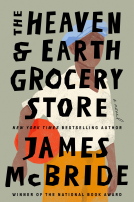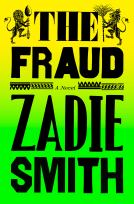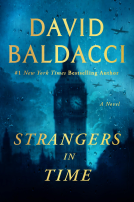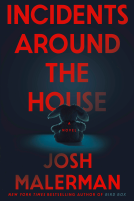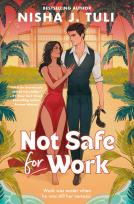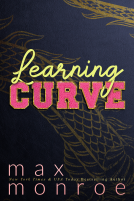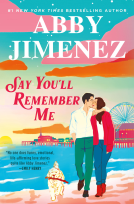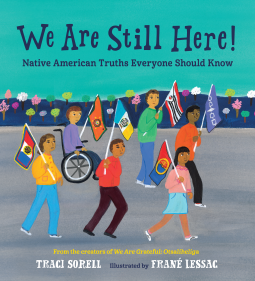
We Are Still Here!
Native American Truths Everyone Should Know
by Traci Sorell
This title was previously available on NetGalley and is now archived.
Send NetGalley books directly to your Kindle or Kindle app
1
To read on a Kindle or Kindle app, please add kindle@netgalley.com as an approved email address to receive files in your Amazon account. Click here for step-by-step instructions.
2
Also find your Kindle email address within your Amazon account, and enter it here.
Pub Date Apr 20 2021 | Archive Date Apr 20 2021
Talking about this book? Use #NativeAmericans #NetGalley. More hashtag tips!
Description
An ideal nonfiction picture book for 7-10-year-old future activists and changemakers! An inspiring read by best-selling and award-winning Cherokee author Traci Sorell.
Too often, Native American history is treated as a finished chapter instead of relevant and ongoing. This companion book to the award-winning We Are Grateful: Otsaliheliga offers readers everything they never learned in school about Native American people's past, present, and future.
Precise, lyrical writing presents topics including:
- Assimilation
- Allotment
- Termination
- Relocation
- Economic Development
- Language Revival
- Sovereign Resurgence
- and more
A 2022 American Indian Youth Literature Picture Book Honor Book
A 2022 Robert F. Sibert Honor Book
Available Editions
| EDITION | Other Format |
| ISBN | 9781623541927 |
| PRICE | $17.99 (USD) |
| PAGES | 40 |
Links
Featured Reviews
 Rachel M, Librarian
Rachel M, Librarian
Loved this history of American history from a Native American lens. These are facts that young readers should learn and understand. The images are really adorable. There is a glossary, timeline, and note from the author. Highly recommend.
 Beth G, Librarian
Beth G, Librarian
We Are Still Here is a must-purchase for all school and public libraries. This sequel to We Are Grateful refutes an all-too-common narrative; that Native Americans are a part of America's past, and not its present.
We are Still Here covers an oft overlooked part of Native American history: recent history, post colonialism. The story begins by outlining early assimilation practices, and continues through today's sovereign resurgence and advocacy. While the difficult vocabulary may put off younger readers, the refrain of "We Are Still Here!" is critical and captivating. Readers walk away with the knowledge that while Natives have been continually betrayed by the American government, they are still fighting and making their voices heard.
 Educator 501885
Educator 501885
This book is extremely informative and contains a wealth of knowledge, but for some reason I feel like it is missing something. I can't quite put my finger on it. I do feel like this book has the possibility of expanding into a variety of editions that contain the same information but offer different ways of sharing that information. I did like the creative approach for this edition, but I feel like a clearer and less indirect approach might be beneficial to some readers as well.
This illustrated book to educate us about the sufferings of the indigenous peoples focusing on the resilience of such communities surviving throughout these years amidst unrest, fear and injustices done towards them.
The artwork and the illustrations are pretty basic.
It's a great way of introducing the concept through such a simple yet powerful storybook.
Highlights: facts and brief history on the same, and what's been done so far for this issue.
Thank you, authors and the publisher for the ARC.
I love everything about this book. I love the pictures, the format of the story and the message! This made me stop and think that in America we do not know much about the Native Americans. I do not know much about their culture, and their life today. I wish I did know more. This book is an important book for children to read! I loved the format of this story with the way it was delivered over student presentations. This was such a creative way to get the message across.
 Myra Z, Educator
Myra Z, Educator
Readers learn about the continued presence and persistence of the Native Nations as they respond to pressures for assimilation, allotment of land, Indian child welfare, and more. Each of 12 topics is presented as if it were a presentation by a child on a project on an Indigenous Day People’s Day project. The information is important and the illustrations support the text. The format, though, is repetitive and gets tiresome. Interesting back matter includes a timeline, glossary, list of sources, and author’s note.
 Reviewer 29316
Reviewer 29316
This was a very educational book for us. The history and political backgrounds are great to teach kids and adults. It is just amazing how well the kids’ drawings really brings a book that hits home—that really made this book that much relatable and personable. Not only did We learn a lot but the book made me feel the authors cry of “We are still here!”.
I love how they call the reader to look at where we live and examine what lands or native Americans are indigenous to where we live. To pull the reader to see how it directly affects the tribes and relates to us personally. There are timelines in the back of the book and a summary of the different presentations the kids did—ultimately this book was done well to bring forth historical truths. It takes a strong hopeful positive stance that shouts “we are still here!”
We Are Still Here is the mantra repeated throughout this book and serves as a testament to Native people’s strength and resilience. This is an informative book on the history of laws and legislation that Native Americans have fought for to ensure their rights and protect their lands. There is a glossary, timeline and notes for the reader. Young readers will be encouraged to dig even deeper after reading this book.
A beautiful non-fiction book for older elementary/middle grade readers about Native Nations' history in the United States, written by a dual citizen of the Cherokee Nation and the United States. I love Traci Sorell's first book ("We Are Grateful") and while this book is aimed at older readers, it is a wonderful addition and I look forward to sharing it with my students.
 Elizabeth K, Reviewer
Elizabeth K, Reviewer
We Are Still here is a fantastic nonfiction picture book from Traci Sorell and Frané Lessac (the creators of We Are Grateful: Otsaliheliga). This book covers a surprising amount of history between Native Nations and the US government, offering up a great deal of kid-friendly insight into the painful complexities of the treatment Native Nations and citizens faced as a result of USAmerican policies. It packs a hundred and fifty years of history into a classroom on the page where Indigenous students present the histories on Indigenous Peoples' Day. The art is great, the text is great, and the extra notes and timeline at the end are very helpful. Highly recommended!
 Amber W, Educator
Amber W, Educator
I love Traci' s books and was so excited to see a new one. This book does an incredible job of explaining what all Native Nations have had to go through here just to survive and aren't to hold on to their heritage. This is a book that needs to be shared student in schools and often throughout a child's education.
A new non-fiction picture book collaboration between Traci Sorell and Frané Lessac. This one is less story time readable, but would be an excellent lap read for a pre-school through first or second grade child. I like the framing of the content like the classroom's presentations and I especially like that the illustrations are based on historical events/photos. There's tons of great back matter and I think it would be at home in many classrooms and libraries! I will certainly incorporate it into my library displays (once that's a thing again).
Thank you NetGalley and CharlesBridge for the gifted egalley in exchange for an honest review.
I have yet to find anything Traci Sorell has written that I don’t like. Sorell is an amazing author who is able to take complex narratives and deliver them beautifully for children of all ages. We Are Still Here! is the perfect example of this. We Are Still Here! delivers history of Native Nations in a bite size, easy for younger readers to understand ways. I love that this book is told in the form of student presentations and has the predictable pattern while reading. I love the content and how it’s digestible for even my first graders. The illustrations were fun and offered more to unpack for older learners. The back of the book includes a timeline and further resources which are amazing! I’m so excited for everyone to experience this book. Do yourself a favor and buy this for your classroom and for any children in your life.
 Michelle G, Librarian
Michelle G, Librarian
Sorell and Lessac present children with another fabulous book - We Are Still Here!: Native American Truths Everyone Should Know. While We Are Grateful focuses on remembering to be grateful for what we have and to express that gratitude, We Are Still Here is aimed at a slightly older audience and takes on 12 important Native American terms and issues and breaks them down in a way that children can understand. From assimilation through relocation and tribal activism to language revival, the truths of Native Americans are explained. Whenever Americans have tried to push Native Americans out of their rightful homes and traditions, they have persevered and, as the book says, "In spite of all this, Native Nations say 'We Are Still Here!'" An aim of the book is to also show that Native Nations are still alive and well. They are not a past chapter in American history, they are a thriving world within American borders. Not surprisingly, there is excellent back matter that gives additional details and a timeline. Excellently done! (April 20, 2021; Ages 7-10)
 Bethany W, Librarian
Bethany W, Librarian
A dozen Native American students give presentations on 2-4 pages each describing how the United States (and Great Britain before) has treated (and continues to treat) indigenous people. There is a glossary, extensive historical information, and author's note that goes into much more detail. This is definitely not a picture book, but a nonfiction title that elementary kids can use to get a beginner's grasp on what it's like to have been indigenous in the United States for centuries.
My main concern is that it's not leisure-reading friendly. It has good information for a report, but how many kids will just pick this up and read?
 Megan B, Librarian
Megan B, Librarian
Thanks to NetGalley and the publisher for the chance to read this advance copy. I have read Traci Sorell's other book and knew I had to read this one as well. I think the format she used of school presentations was an amazing way to provide a brief introduction to some of the different issues Indigenous people have had to face in America. I appreciate that it was clear about the negative things the government has done to tribes and also the positive things, though many of those were either not taken far enough or not upheld unfortunately.
One of the consistent problems with how the United States education system teaches about Native American is that it often leaves students with the impression that Native Americans ONLY exist in history, which is why the proclamation (and title of this book) “We are still here!” is so important.
This non-fiction children’s book is smartly formatted as if it were a series of short student presentations for Indigenous People’s Day. Each topic is accompanied by beautiful illustrations that underscore the book’s message that Indigenous people are indeed still here today, fighting to keep their traditions, languages, and cultures alive, despite government policies and societal attitudes that actively work against Native American sovereignty and wellbeing.
This book is not formatted as a cohesive story, and therefore may not work very well as a read-aloud for younger children, but would make excellent supporting material for a home or classroom. “We are Still Here” introduces important concepts such as assimilation, tribal activism, self-determination, language revival, and sovereign resurgence. This is a worldview-expanding book that provides children (and adults!) a framework through which they can better understand and think critically about future education and messages they receive about Indigenous peoples both past and present.
 Pat T, Reviewer
Pat T, Reviewer
This is an important read for children (and adults) everywhere. Too often the history of the Native Peoples in America is ignored or presented only from the European colonists’ point of view. This book clearly outlines what it was like then and is now to be part of a Native Nation. It points out lots of injustices of the past, and it is important our children learn about them and learn from them. But the power of the story is that it doesn’t victimize the past treatment and leave it at that. It tells the story in such a way as to also show the resilience of the Native Peoples and the contribution they made to our country during wartime. And most importantly it reminds children that Native Nations are still among us. While the story is presented in picture book format, don’t be fooled. This is not a book for young children. Rather it is appropriate for the upper elementary classroom where students and teacher can begin a meaningful discussion of this important part of our history and the Native Peoples who still live among us.
 Kids R, Educator
Kids R, Educator
"We Are Still Here" by Traci Sorell is a book about Native American truths everyone should know. The author summarizes twelve major topics that are specific to the Native American experience. It's a great introduction to middle school Native American studies.
 Reviewer 453301
Reviewer 453301
Wow. This book blew me away. It's hands down the best children's book I have ever read. Written by a Native American author, she tells the story of Native Nations in America from 1776 to now. How they have been forced to assimilate, had lands stolen from them, been killed, told they couldn't speak their own language (!!!), and so much more. And she does this in such a clear and concise manner, I can't recommend this book enough. It was such an impactful book despite how short it is. I highly recommend this book to every reader, regardless of their age! It has definitely sparked my interest and I know I need to do more to educate myself on the topic so I can be an ally.
 ruth g, Librarian
ruth g, Librarian
This is the story of the indigenous people of American. It tells of their various struggles to remain in existence. Each page contains a heading in which their fight is explain. From the Europeans coming and taking over their land to them fighting to keep their native language alive. There is a lot that I have learned about the battles that the Native Americans faced. I great starting point to teach children their history.
This is a very informative and much needed picture book. I will be ordering for 5th graders who study Native American tribes and history. The use of children presentations to break up the topic is creative and effective. The terms and ideas are broken down in ways for students to understand. This will create powerful conversations in homes and classrooms and should be purchased by elementary, middle school, and public libraries.
 Cheryl W, Librarian
Cheryl W, Librarian
Charming, folksy paintings illustrate digestible sections on different events and movements in Native American culture from the “We Are Grateful” team. With the narrative alternating between past and present tense, this rich picture book dispels the myth that Indigenous people only existed in the past. Fills a gap in nonfiction histories of Indigenous Americans for children. Must-have for elementary/middle school libraries.
This was such a great book to learn about Indigenous history. Although I am Canadian, many of the things talked about in the book are similar between the two countries. I really like how it was display through student projects and presentations and thought the information was portrayed in a very good way
 Educator 595424
Educator 595424
Another wonderful book by Traci Sorell! (If you haven't read her other book, "We Are Grateful: Otsaliheliga", you should!)
An excerpt from her Author's Note, which I think is perfect to give a glimpse of this book:
"All the information on these pages is true--this book is nonfiction. The students giving the presentations in the book are not real, but there are Native-operated schools like the one depicted in this book where young people learn these facts. Everything in this book is a fundamental part of the United States history, as well as its present, and should be known by everyone living in this country."
So much of the stories of the Native Nations have been erased and reduced over the centuries, and students don't learn a lot (if any!) about the Native Nations in the US. This book is wonderful because not only it provides info about the different events, laws, activism, histories of the Native Nations, but it also captures everything in a way that's so full of hope. The people are saying that they are still here, and their stories matter.
 Meena N, Reviewer
Meena N, Reviewer
This was a very informative book about indigenous people! It was put in a way that kids can understand it, and the pictures were great!
 Wendy R, Librarian
Wendy R, Librarian
What an important book! The information it provides is so integral to any understanding of the history of Native Americans. The set-up of the book, where students engage in the presentation of their classroom project, will especially resonate with my students.
The repetition of the "We Are Still Here" mantra is certain to be remembered. The history of the harsh and undeserved treatment of Native Americans is not glossed over and allows readers to understand what occurred.
What's especially important is the self-determination and pursuance of their rights which are masterfully explained. The follow-up material provided a thorough examination of what can further be studied.
This will be an important addition to my Media Center.
Traci Sorell has written another wonderful picture book that celebrates the strength of the Native history and cultures of this country.
We Are Still Here! is a valuable text in any library and classroom because it encompasses the points of view of the many Native groups which still reside in the U.S. Written as though students are presenting information to their classmates, the book delves into 12 topics of Native history. Each topic is a mix of paragraph and bulleted formats, and speaks of the on again/off again relationship the Native people have with the government. At times supportive, but most times destructive, the government seems to have wavered in its commitment to the Native people over the past 200 years. Sorell is honest about both the gains and the setbacks. The theme is clear: despite the hardships and injustices incurred since Europeans landed on this continent, Native people are still here, fighting for their land, rights and culture.
In addition to the 12 sections, there is a three page timeline in the back matter. It does a wonderful job supplementing the information in the book (I was left wondering about the chronological order of some of the events and the timeline answered those questions). Teachers will want to use that in their lessons. The author's note is also something not to overlook as it highlights Sorell's journey as a dual citizen of both the Cherokee and U.S. nations. Her point of view is critical, especially when explaining and teaching this topic to students. This is the story of her people.
Thank you to the author, illustrator, Charlesbridge publishing and Netgalley for an early copy to review. I will certainly be purchasing for my classroom.
What an incredible book! I love the timeline in the back that lays out the events of the US occupation of indigenous peoples' lands. I have tried to learn about this before, but this book puts it all together in one book for kids in an empowering way. The art is great too!
 Jennie C, Reviewer
Jennie C, Reviewer
We Are Still Here is a great children's book about the experiences between the Native Americans and the US government/White America. The pattern of the story starts with the first adverse interactions through to more recent times. It is nice to show the more recent changes to the native experience including some positive ones. This book while designed for children does not sugar coat the past but does give hope for a better future.
 Jennifer S, Reviewer
Jennifer S, Reviewer
This is a really important book for children. A lot of information in this book is not included in history textbooks. I do feel like there was a better way to present it, though. The concept of presentations for a class was interesting, but it felt like it was just listing information. I still really enjoyed learning from this book and look forward to buying it for the littles in my life.
This is a book every person needs to immediately seek out! Through the course of the story, the reader learns important aspects of history, law, policies, and challenges faced by Indigenous people. While the history is horrific, the message is not downtrodden but part affirming and part rallying cry in the repetition of the phrase "We Are Still Here!" Too often Indigenous culture and history is either ignored or glossed over and categorized as a misleading folk-version that aligns with white culture. This book is a prerequisite for further exploration and discovery into what history classes too often ignore.
 Rebecca R, Educator
Rebecca R, Educator
This is a fabulous addition to any classroom/library! I teach third and fourth graders and have adopted this book in my classroom. There's so much information that it could be used for an entire unit or it could have numerous stand-alone units. Fantastic timelines and resources in the book that it's very versatile for any classroom/library!
Readers who liked this book also liked:
Jodi Picoult; Jennifer Finney Boylan
General Fiction (Adult), Literary Fiction, Women's Fiction
Karin Slaughter
General Fiction (Adult), Mystery & Thrillers, Women's Fiction


